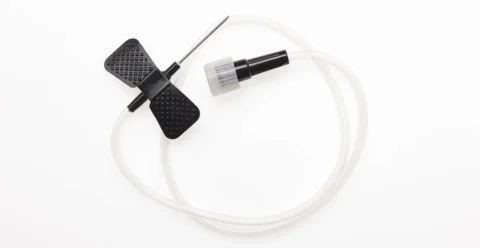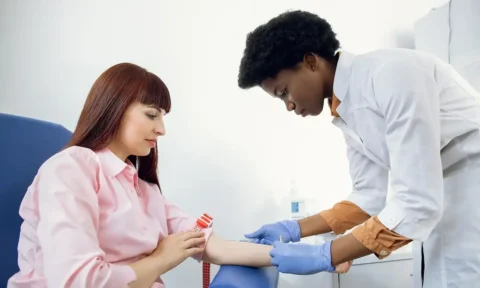Expert Advice on Locating the Right Vein for Your Needs
Finding a vein can be crucial in various situations, such as medical procedures, administering intravenous medications, and drawing blood samples. In this article, we will explore different methods and tips to help you locate veins in various body parts, including arms and legs, with special considerations for obese individuals.
Anatomy of Veins
Veins are blood vessels that carry deoxygenated blood back to the heart. They play a crucial role in our circulatory system, and being able to identify and access them is essential for various medical procedures. Familiarizing yourself with their structure and location can help you find veins more easily and improve your success rate when attempting venipuncture or IV insertion.
Veins in Arms
The main veins in the arm include the cephalic, basilic, and median cubital veins. These veins are often used for venipuncture and intravenous access due to their relatively large size and accessibility.
Veins in Legs
The leg veins include the great saphenous vein and the small saphenous vein. These veins are used for intravenous access in emergency situations when arm veins are not accessible.
Methods to Find a Vein
In order to successfully locate veins for various medical procedures, it’s essential to employ a range of techniques that can enhance the visibility and accessibility of these blood vessels. Each technique offers unique benefits and can be used individually or in combination to improve the chances of finding a suitable vein.
The following table provides an overview of these techniques, their descriptions, and how they can help you locate veins more effectively.
| Technique | Description |
| Palpation Technique | Gently press your fingers on the skin surface to feel for veins. They will often feel like soft, round tubes with a slight bounce. This technique helps you familiarize yourself with the structure and location of veins, making it easier to locate them. |
| Tourniquet Use | Applying a tourniquet above the area where you’re trying to locate a vein can help make the veins more prominent by restricting blood flow. This makes the veins more visible and easier to access for various medical procedures. |
| Gravity Assistance | Hanging your arm or leg down can help blood pool in the veins, making them easier to find. This natural method utilizes gravity to increase blood flow in the targeted area, enhancing the visibility of veins. |
| Warming the Area | Warmth can help dilate the veins and bring them closer to the skin surface. Use a warm towel or heating pad for a few minutes before attempting to locate a vein. This technique improves vein accessibility by enlarging and making them more visible. |
| Hydration | Staying well-hydrated can make veins more visible and easier to access. Proper hydration maintains healthy blood volume, which in turn contributes to the prominence of veins, making them more accessible for medical procedures. |
| Tapping the Area | Gently tapping the skin over the vein can stimulate blood flow and make the vein more prominent. This technique encourages blood flow to the surface, increasing the visibility of veins and making it easier to locate them. |
| Using a Vein Finder Device | Vein finder devices use infrared light to help visualize veins under the skin. They can be particularly helpful in challenging cases, such as locating veins in obese individuals or when other methods are not successful. |
How to Locate Specific Veins
Finding Veins in Your Arm
To locate veins in your arm, start by extending your arm and examining the inner side of your elbow. The median cubital vein is often visible here and is commonly used for blood draws.
Finding Veins in Your Leg
For leg veins, examine the inner side of your ankle or behind your knee. The great saphenous vein is typically located in these areas and can be used for IV access if needed.
Finding Veins to Inject Into
The best veins for injection are those that are straight, large, and visible. The cephalic vein in the forearm is often a good choice.
Finding Veins for IV Insertion
When looking for a vein for IV insertion, consider the size, visibility, and straightness of the vein. The median cubital vein in the elbow region is a common choice for IV access.
Finding Veins for Blood Draw
For blood draws, the median cubital vein is often preferred due to its accessibility and lower risk of complications. A good vein for IV or blood draw should be large, straight, and visible. It should be easily palpable and have minimal branching to reduce the risk of complications.
Special Considerations for Finding Veins
In some cases, additional considerations may be necessary to successfully locate and access veins. These include:
- Obese individuals: In patients with obesity, finding veins can be more challenging due to increased subcutaneous fat, making veins less visible and harder to palpate. Techniques such as applying a tourniquet, warming the area, or using vein finder devices can be particularly helpful in these situations. Additionally, healthcare professionals should consider using longer needles to ensure successful venipuncture.
- Elderly patients: Aging can cause veins to become more fragile and prone to damage. As a result, extra care should be taken when locating and accessing veins in elderly patients. Using butterfly needles or smaller gauge needles, along with a gentle approach, can minimize the risk of complications, such as bruising or hematoma formation.
- Pediatric patients: Children, especially infants, have smaller and more delicate veins compared to adults. When locating veins in pediatric patients, it’s crucial to use appropriate techniques and equipment, such as smaller needles and lower tourniquet pressure, to reduce pain and anxiety while ensuring the success of the procedure.
- Patients with a history of IV drug use: Individuals with a history of intravenous drug use may have damaged, scarred, or collapsed veins, which make it more difficult to locate suitable veins for medical procedures. In these cases, healthcare professionals should consider alternative sites or methods, such as ultrasound-guided venipuncture, to improve the chances of successful vein access.
- Individuals with dark skin tones: Veins may be less visible in individuals with darker skin tones, making it more challenging to visually identify suitable veins for venipuncture or IV insertion. Relying on palpation techniques and other methods like using a vein finder device can help overcome this challenge and improve the success rate in locating veins.
Alternative Sites for Venipuncture
While arms and legs are the most common areas for locating veins, there are alternative sites that can be used when necessary. These include:
| Location | Description |
| Hand | The dorsal hand veins can be used for IV insertion or blood draw, particularly when veins in the arm are not accessible or suitable. This site offers an alternative location that may be more accessible for some individuals or in certain situations. |
| Foot | In some situations, the veins on the top of the foot may be used for venipuncture. However, this site is less commonly used due to the increased risk of complications and discomfort for the patient. Using foot veins should be considered cautiously and with professional guidance. |
Improving Vein Health
Maintaining healthy veins and good circulation can indirectly make it easier to locate veins when needed. Here are some tips to promote good vascular health:
- Exercise. Regular physical activity helps improve blood flow, strengthen blood vessels, and prevent issues like blood clots or varicose veins.
- Diet. Eating a balanced diet rich in fruits, vegetables, whole grains, lean protein, and healthy fats can help maintain healthy blood vessels and reduce the risk of vascular disease.
- Hydration. Staying well-hydrated helps maintain proper blood volume, making veins more visible and accessible.
- Avoid smoking. Smoking can damage blood vessels and reduce circulation, making it more difficult to find veins. Quitting smoking can significantly improve vascular health.
- Elevate legs. If you spend long periods sitting or standing, elevating your legs periodically can help improve blood flow and prevent issues related to poor circulation.
Takeaway
Finding a vein can be challenging, but by using various techniques, understanding the anatomy of veins, and considering special circumstances, you can successfully locate veins for various purposes. Remember to stay patient and persistent, and always practice proper hygiene and safety measures when accessing veins.
Upgrade Your Venipuncture Toolkit: Discover the Comfort of Face Med Shop Butterfly Needles
As you continue to explore the world of venipuncture and locating veins, it’s important to consider the tools that can make the process smoother and less painful. The Face Med Shop Butterfly Needles are designed specifically for this purpose, providing a more comfortable experience for both patients and medical professionals.
These butterfly needles feature a flexible, winged design that allows for better control during insertion and helps minimize discomfort. By using these specialized needles, you can improve the overall success of your injections or IVs while reducing pain and anxiety associated with the procedure.
Don’t miss out on the opportunity to enhance your vein-finding skills and ensure a more positive experience for everyone involved. Visit Face Med Shop today and check out our Butterfly Needles as an essential addition to your venipuncture toolkit!






